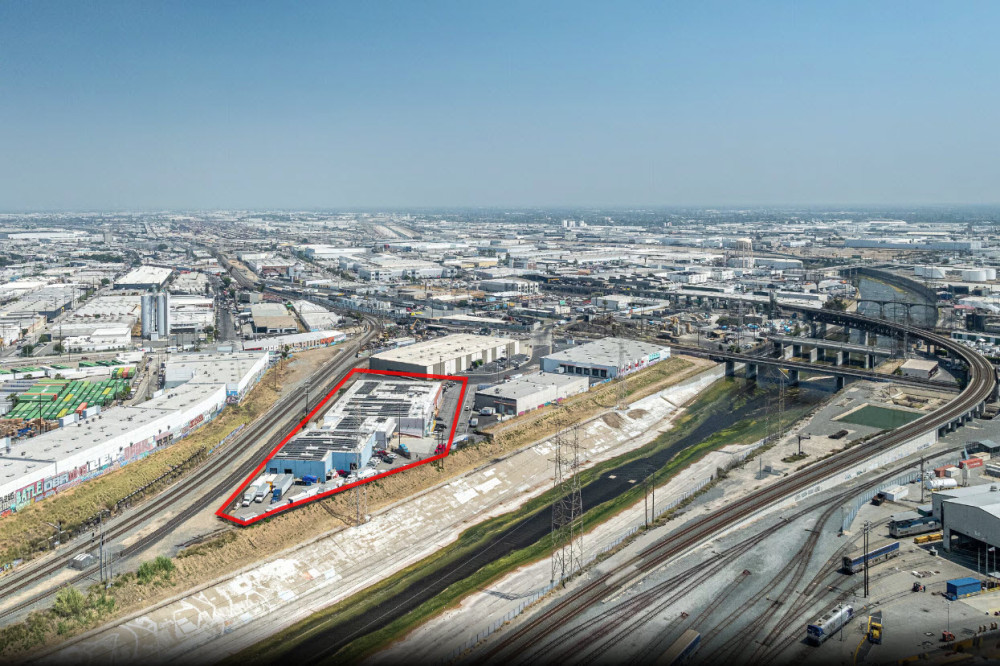SIGN UP FOR REAL ESTATE MARKET NEWS & TRENDS

In 2022, LA Mayor Karen Bass directed city agencies to fast-track 100% affordable apartment projects to relieve the cityâs housing crunch. Hereâs how that push is working.
Architect Brian Lane calls it â1,000 ways to no.â Thatâs the wall of red tape that he and his colleagues at the Santa Monica-based firm Koning Eizenberg hit when they propose affordable housing projects around Los Angeles. Regulations and code enforcement lead to delays, which drive up costs, kill projects, and exacerbate Southern Californiaâs stifling housing shortage.
But over the last year, builders say that this bureaucratic morass has eased somewhat, thanks to the mayoral order known as Executive Directive 1.
Mayor Karen Bass signed ED 1 shortly after taking office in December 2022, at the site of an infamous project that took more than a decade to be approved. The emergency declaration promised to open a new era, directing city departments involved in planning and decision-making to expedite 100% affordable projects, sidestepping codes and regulations that have long added delays and costs. Approvals that might otherwise have taken a year or more are now mandated to happen within a 60-day window, with building permits to be issued within five days.
As of early February, ED 1 has helped lay a pipeline of more than 16,150 affordable housing units across the city of Los Angeles, all without requiring any new funding, public subsidies, or tax credits, per a CalMatters analysis. Thatâs more than 2020, 2021, and 2022 combined, all by encouraging market-rate developers to do 100% affordable projects.
City lawmakers are now weighing whether to codify the programâs streamlining reforms via an ordinance that awaits a full vote by the City Council. Additional policy pushes to boost housing production are also in the works; Bassâs ED 7 initiative, which ordered city departments to find other ways to accelerate all types of housing in Los Angeles, should be releasing its findings soon.
For developers, ED 1 has already changed the economic ecosystem on building low-income housing.
âItâs providing the market with a product that just wasnât being provided before,â said Gary Benjamin, principal at Alchemy Planning, an LA firm thatâs worked on a number of ED 1 projects. He says the proposals heâs worked on will result in sub-$1,800-a-month unsubsidized studio rentals, a godsend in a city where the median rent can be $2,800. âThere was never anybody who was really jumping at the chance to build a 100% affordable project without being able to get some kind of public financing or public subsidy,â he said. Now, âdevelopers are pursuing it with a lot of enthusiasm because the math works.â
But while ED 1 has been successful in streamlining construction permitting, getting these projects built stands to be a much larger battle for Bass. Over the last 14 months, community groups have pushed back on some ED 1-approved projects, especially in residential areas dominated by single-family homes; others fear gentrification and displacement that new development could herald. The scale of the regionâs housing crisis, and the intensity of feelings that the issue generates, offer some sobering context. To meet state-mandated housing goals, LA needs to zone for 250,000 additional units by October.
âThe top-line headline is ED 1 has been a huge success, unprecedented in terms of the number of units being entitled and the speed with which they were entitled,â said Scott Epstein, director of policy and research at Abundant Housing LA. âThis is coming at a time when weâre deep in the hole, in terms of meeting affordable housing goals, and considerably short on resources.â
The Need for Speed
ED 1 rightfully gets attention for the pace at which it operates. One of the keys to its success, and potential lasting impact, is the way it unlocks existing building codes and state housing laws. Projects that meet ED 1 criteria donât have to deal with city council meetings or environmental impact studies. Developers of affordable projects can breeze past open space and parking requirements and sidestep prevailing wage mandates that come with public subsidies, meaning 15% to 20% lower construction costs.
âI've been working in entitlements for 10 years now, and I felt that up until this year, it was you versus the city, a combative and arduous process,â said Jeff Zbikowski, founder and principal of JZA Architecture, a firm that has designed more than 40 of these projects. âWhen this happened, it was like music to my ears.â
No projects in the ED1 pipeline have been completed yet, but what might be called an ED 1 style may emerge. Extra floors and the absence of open space and parking requirements translate into tall, boxy projects set closer to the lot lines. Benjamin says that many of the projects heâs working on fit into smaller lots; he describes their potential to create more âfine-grainedâ development, if not a new building typology.
Zbikowski, on the other hand, expects simple structures with bare-bones amenities. âI think weâre gonna see a lot of big stucco boxes,â he said.
Hitting a âBrick Wallâ
The size and aesthetics of ED 1 projects could play a part in the welcome they receive from host neighborhoods. NIMBY-style pushback to new development is a fixture of Californiaâs housing landscape, and ED 1 projects are not immune.
Initially, ED 1, in conjunction with some state laws, made it possible for developers to build in areas zoned for single-family homes, but community resistance from the handful of proposed projects was severe enough that Bass rescinded the single-family aspect of ED 1 in June. That has left roughly nine projects representing 1,443 potential units in limbo, according to an analysis by LAist.
Developers say they should be allowed to proceed, since the proposals were legal when they were filed. This has led to appeals, disagreements and now lawsuits. YIMBY Law California has filed an appeal.
âThose projects ran into a brick wall,â said Dave Rand, a land use attorney with Rand Pastor Nelson. âI told my clients to get ready for a change in ED 1, because you can bet when seven-story, 100% affordable housing projects start being proposed in single-family neighborhoods, thereâs going to be a massive backlash. What shocked me was when the city refused to honor what I thought to be very clear state law.â
Rand emphasizes that the developments in question may be in areas zoned for single-family homes, theyâre not 20-story towers in suburban cul de sacs: One project in the San Fernando Valley, for instance, sits on Winnetka Boulevard, a main commercial corridor. âWe are not pirates who are looking to bombard these neighborhoods,â he said. âThe sites are appropriate for multifamily; the zoning just isnât in line.â
A second roadblock concerns the California Environmental Quality Act, the stateâs notorious environmental review process. Since ED 1 creates whatâs called a ministerial process, ED 1 applications should be approved by right, meaning they arenât subject to CEQA review. However, some opponents of these projects have levied an appeal arguing that this ministerial exemption doesnât apply, and they need to go through CEQA. Rand dismisses these as âHail Maryâ appeals, focused on a single, straightforward â and he says incorrect â interpretation of one facet of the law, and heâs confident theyâll ultimately fail.
But one project thatâs been the subject of one of these CEQA appeals is âoff the rails,â according to developer Steven Scheibe, who has stopped seeking out financing for a 44-unit building heâs proposed for the Sawtelle area of the west side. He doesnât agree the CEQA review is just a formality; it argues that ED 1 isnât valid, and if accepted, could derail the program.
âThe neighborhoods that truly need this type of affordable housing are the ones who are against it,â Scheibe said. âThis involves no tenant displacement, is in a high median-income area, where rents are 40% to 50% higher than what weâd be offering. This is the exact kind of project Iâd think ED 1 was made to allow.â
After ED 1
Community groups have raised objections about the way ED 1 projects have been clustered in particular neighborhoods. South LA has been particularly popular with developers, for example. Thatâs brought concerns about displacement of existing tenants.
Maria Patiño Gutierrez, director of policy and advocacy, equitable development and land for Strategic Actions for a Just Economy (SAJE), said sheâs tracked more than 60 renters in South LA whoâve been forced to move in advance of ED 1 projects. Her and other advocates have requested stronger anti-displacement protections for any building demolished for these projects.
The concentration of ED 1 units in lower-income neighborhoods reflects the financial reality of building in LA. Developers need lower-cost land to make projects pencil out; the elimination of single-family zoned areas from consideration means that a shrinking selection of tracts must hold a vast amount of housing. ED 1 might be effective at expediting new affordable housing construction, but itâs not as adept at breaking down the zoning barriers that have long led to neighborhood inequity.
âThe vast majority of our city is zoned single-family, and we have unbelievably ambitious housing goals that we need to achieve,â said Rand. âItâs going to be very hard to achieve those goals and do whatâs needed if we can just look at commercial boulevards, where land is very expensive, and frankly, limited.â
Still, if this first wave of ED 1 buildings proves successful, they could have a larger impact than just adding more affordable housing. The program underscores the power of ministerial processing [or âthe outsized influence of municipal bureaucracyâ] and making approval of projects by-right. Many are also being built without parking, which could end up further popularizing car-light or car-free apartment construction.
âI think it's kind of shifting away from an older way of thinking, that weâre going to be a car-dominated environment, and each individual apartment building will be its own little world within a world,â said Benjamin.
Builders like Benjamin can see rolling back regulatory barriers to rapid home production ending up having a transformative effect on the cityâs housing landscape.
âââWeâre kind of talking abstractly about a type of product that wasnât available,â said Benjamin. âBut at the end of the day, weâre talking about people being able to live in a neighborhood that they werenât able to live in before.â


